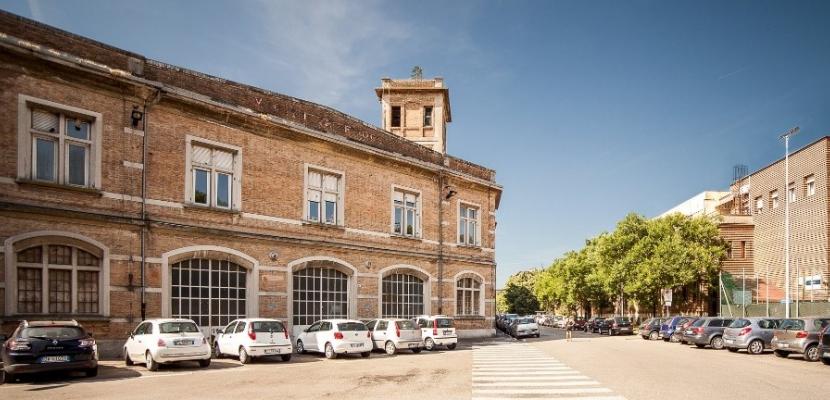
Factory Grisu: from a former firefighters buildings to a creative enterprises hub

About this good practice
In August 2012 the area, a former firefighters barrack, was granted by the Province of Ferrara on free loan to the non-profit Association "Grisù" which managed it until February 2016, starting the recovery of the spaces and the selection of the first companies that have settled inside. In 2014, a participatory design process developed by LBLA + Partners, OURLab, and ArchLivIng, which designed an innovative project based on the principles of minimum transformation, low cost, and continuous flexibility over time.
The Grisù Factory Consortium was then established in Ferrara in February 2016 with the aim of participating in the tender called by the Municipality of Ferrara for the new management of the creative factory, and is today the manager of the property until 2025. Consorzio Factory Grisù (today constituted by 17 creative enterprises) provides spaces of various sizes and possibilities of use. Some of these are intended for temporary use, others are assigned to creative cultural enterprises until 2025. The established enterprises must join the consortium, thus acquiring the free use of the allocated space, but at the same time assuming the economic burden of the restructuring, compliance, preparation of your space. Concessions are provided for youth businesses.
The final aim of the regeneration process of «Factory Grisu» is to favour the growth and the empowerment of recent or brand new entrepreneurial experiences with high potential, to succesively activate start-ups.
Expert opinion
Resources needed
In August 2012 the area was granted by the Province of Ferrara on free loan to the non-profit Association "Grisù" which managed it until February 2016, starting the recovery of the spaces;
In 2019, a Funds from Municipality + Emilia-Romagna Region (1.5M€) for the surrounding areas;
Evidence of success
- The grassroot Grisù association comanaged the rehabilitation of the area and then upgraded into a Consortium, which now is constituted by 17 creative enterprises
- The area has been regenerated, meaning that the social, economic, and environmental aspects have been tackled and improved from the early stages of the process
- The municipality set a benchmark (and urbanistic standards and rules) for future local urban regeneration projects
Potential for learning or transfer
- Public-private partnership: this urban regeneration project is also a good case in terms of public-private partnership. In fact, the area has been transformed, not only into a creative hub, but also partially into a multi-floor car parking (by aggregating multi-funding approaches in a single regeneration plan which included both the Firefighter building and the surrounding area);
- Urban code and standards (Master planning revision) at the service of Urban regeneration projects): this process also included the application (and declination on the specific site) of the “Regulation on Common Goods” (https://www.labsus.org/i-regolamenti-per-lamministrazione-condivisa-dei-beni-comuni/);
- Co-management of the area since the rehabilitation phase: the focus on creative and cultural enterprises enabled an autonomous management of the site, including small interventions;
- Consortium establishment as a trigger for the regeneration and active use of the area;
Further information
Website
Good practice owner
You can contact the good practice owner below for more detailed information.
Consorzio Factory Grisù

